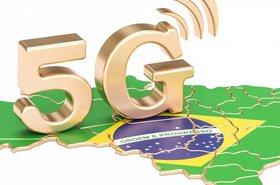Like many, my January goals aim for a cleaner, leaner, healthier life (with money saving a happy side effect). I have to admit that I am not doing great at these on a personal level. However, at work I am aided by our IT Department so things are moving along a whole lot more effectively.
One of our goals this year is to reduce energy consumption and our data footprint where possible. Email is one of the interfaces where we can make small changes that make a big difference. Reducing our use of video is another. The results, however, will be seen in the data center.
Resource use is not a new conversation for our sector. Data centers have rightly been lauded for moves towards carbon neutrality and even a 100 percent sustainable energy supply. However, this is just one strand of the environmental impact of digital. A growing focus on the materials involved and the carbon cost of manufacture (also known as embodied energy) highlights a second strand. The final strand is our use of data which is the reason all this exists and something each and every one of us can do something about.
Sobering up
“Digital Sobriety” made a splash in June 2019 when French environmental think-tank The Shift Project released a paper Lean ICT: Towards Digital Sobriety, outlining the carbon cost of digital transformation. It included some startling revised figures on just how much of an impact digital is expected to make. In 2015, the expected proportion of digital was 3 percent of global energy use by 2025. The 2019 report raised this to 5 percent, an increase of two thirds, with a worst case scenario being 8 percent.
The report emphasized the importance of embodied energy as a result of the manufacture and transport of electronic goods. It highlighted the environmental cost of frequent refreshes of IT hardware. With every new generation, devices become more energy intensive to produce and use. $1 invested in digital technologies now results in 37 percent more energy consumption than it did in 2010. Added to this are the vast amount of rare and critical raw materials present in the equipment. We may be convincing ourselves that video streaming and subscription models are dematerializing our lives. In reality, we are hiding the environmental footprint in the hardware.
Simple steps
Unless we are prepared to kiss goodbye to our banking systems, healthcare, government, business and much of our social glue, the digital equivalent of Dry January is impossible. However, there are simple steps we can make that reduce our transfer and storage of data. These include editing documents on shared drive rather than emailing numerous versions of documents and unsubscribing from email newsletters we no longer read. While we are at it, we can clean out unused apps from our phones and desktops and think about how much we need to share and where we do it.
Digital Sobriety extends into hardware too. The Shift Project suggests we all extend the refresh rate of our smartphones from the current average of 2.5 years to 3.5 years and our laptops from 3 to 5 years. Reducing our use of software will help us to do this as devices will run faster and more efficiently with less on them. However, the main hurdle we will have to face is renouncing the shiny new feeling of a brand-new device.
Sober use of hardware is arguably easier in the data center. Following the Google model, data centers can focus on the useful life of servers rather than the financial life. They can also be prepared to redeploy, refurbish and remanufacture where possible. Efficient use of virtualization and software, cascading older servers into areas with lower compute needs, breaking down machines into component parts and using refurbished parts for spares and upgrades can all have a huge beneficial effect.
The benefits
The authors of the Shift report calculate that adopting their measures would limit the growth of digital energy use to 3 percent of global consumption by 2025. However, this is only part of the story. Energy use is a great indicator but does not touch upon the materials that our digital revolution is consuming, many of which are in very limited supply.
According to the European Commission’s JRC Science and Policy Report, Environmental Footprint and Material Efficiency Support for product policy (2015) a rough bill of materials on a server includes steel, aluminium, and plastic (three of the top five worst offenders for industrial greenhouse gas emissions worldwide), copper, gold and 12 of the 27 critical raw materials identified by the EU as in low or politically unstable supply. Amounts recoverable using current recycling technologies were also included. These ranged from 0 percent to 93 percent dependent on materials – a significant net loss between manufacture and material recovery. Around 121 million server units are due to be deployed between 2019 and 2023. The potential for materials saving by prolonging the life on these is immense.
In data centers, it is about finding the sweet spot between energy efficiency at use phase and embodied energy savings on hardware systems. The traditional view has been that regular server refresh is the more environmentally friendly choice than sweating the assets because of the energy required at use phase, plus efficiency gains in successive generations. However, when you factor in embodied energy and the reduction of efficiency gains in newer generations, the picture becomes more complex. One of the industry’s New Year’s resolutions could be to find some concrete answers on this, with the understanding it may take more than 12 months. Digital sobriety is not an action but a habit – hopefully one we can all adopt.






